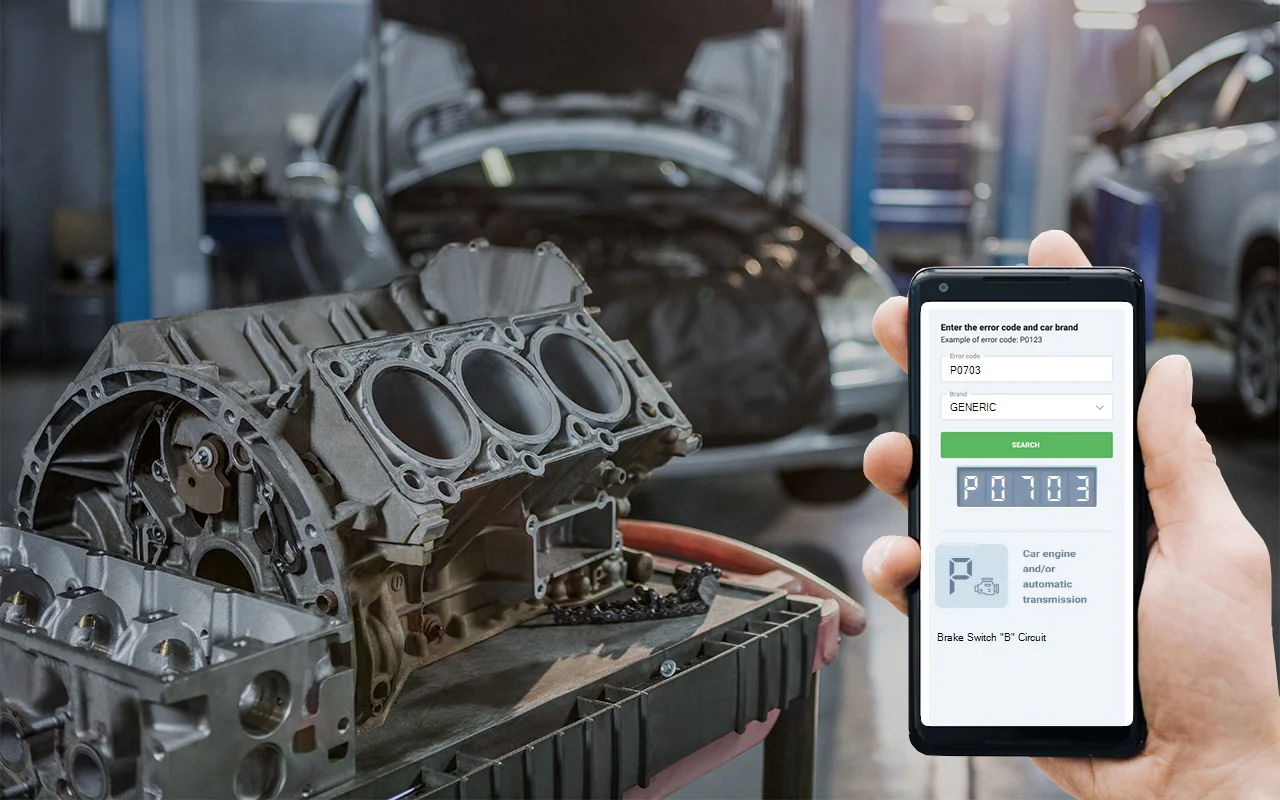When you see a P0703 code pop up, your vehicle’s computer-the PCM-is telling you something’s not right in the brake switch 'B' circuit. From my time under the dash, I can tell you this switch is more than a simple trigger for your brake lights. It’s responsible for alerting the computer when you press the brake pedal, which in turn handles the brake lights, disengages cruise control, unlocks the shifter, and even helps the transmission know when to shift. If the PCM isn’t getting the signal it expects from this circuit, it’ll set this code. So, when you see p0703, you’re looking at a communication breakdown somewhere in that brake switch setup.
DTC P0703
Causes of P0703 code
From experience, the most common culprit behind a p0703 code is a faulty brake switch itself. But I’ve also seen plenty of cases where the real trouble is in the wiring-like a broken wire, a short, or a corroded connector in the brake switch 'B' circuit. Sometimes, it’s as simple as a blown fuse or a loose connector. In rare cases, the vehicle’s main computer (PCM) can be at fault, but that’s pretty uncommon. Here’s what I usually find:
- Brake switch failure
- Broken, shorted, or open wiring in the brake switch 'B' circuit
- Damaged or corroded connectors
- Blown fuse or fusible link
- PCM malfunction (rare)
Symptoms of P0703 engine code
If you’re dealing with a dtc p0703, you’ll probably notice a few things right away. The check engine light or malfunction indicator lamp (MIL) will likely come on. You might find that your brake lights aren’t working at all, which is a big safety issue. Cruise control usually stops working, and sometimes the car won’t let you shift out of park. In some cases, the engine might stall when you come to a stop, or you’ll notice the transmission isn’t shifting smoothly. You might even see worse fuel mileage or the car feeling sluggish, especially on the highway.

Diagnosis steps for dtc P0703
Let me walk you through how I tackle this one in the shop. First up, don’t overlook the basics-have someone tap the brake pedal and check if the brake lights actually illuminate. No lights? That’s already a direction. Next, I get down under the dash to inspect the brake switch, usually found mounted right above the brake pedal arm. Look for anything out of the ordinary: a busted switch, loose plug, or corroded pins. After that, I’ll trace the wiring, hunting for breaks, shorts, or anything that looks like it’s seen better days-sometimes road salt or a spilled coffee under the dash can corrode a connector and cause havoc. Don’t ignore the fuse box either; a blown fuse is a quick fix but easy to overlook. If everything appears solid, I’ll hook up a scan tool and monitor the brake pedal signal as I apply and release the brake. If the data doesn’t change as it should, you’re likely dealing with a bad switch or wiring. Only after ruling out all the obvious stuff do I start suspecting the PCM, and honestly, that's a rare scenario. It helps to have a buddy work the pedal while you watch-makes life a whole lot easier.

Common mistakes when troubleshooting obd2 code P0703
A classic mistake I see is folks swapping out the brake switch right away without ever glancing at the wiring or connectors. Another one? Forgetting to check the fuse-I've lost count of how many times that's been the issue. People also miss checking both the brake lights and the cruise control, which are both tied into this circuit and can offer clues. Skipping a solid visual inspection of the wiring harness will have you chasing your tail. And please, don’t just clear the code and hope it stays away. That’s wishful thinking, not a fix.

Seriousness of P0703 trouble code
Take it from someone who's seen the aftermath: ignoring this code can get you in real trouble. If your brake lights are out, drivers behind you have no idea when you're stopping, and that’s a recipe for a rear-end collision. On top of that, you might get stuck in park or have the transmission act up-I've seen cars left stranded over something as basic as a bad brake switch. Some vehicles will even lock out the torque converter clutch, which can cook your transmission if you keep driving. Leave this unchecked, and you’re flirting with bigger, more expensive problems. Parts that could end up damaged? The transmission, the PCM, and the wiring for your brake lights.
Repair solutions for P0703
In the majority of cases, the fix is straightforward-swap out the faulty brake switch. If the wiring or connectors are shot, repair or replace them. Sometimes, all it takes is a fresh fuse. After any repair, I always clear the code, then check every related function: brake lights, cruise control, shifter lock, and transmission operation. If the PCM turns out to be the root of the problem, you might need to reprogram or even replace it, but that's rare and usually the last thing to try. Pro-tip from the garage: always double-check your work before calling it done.
Conclusion
So, here’s the bottom line: P0703 means your car’s computer isn’t seeing what it needs from the brake switch 'B' circuit. It's not something to put off, since it messes with your brake lights, cruise control, and even how the transmission behaves. Tackle the simple stuff first-check the lights, the switch, wiring, and fuses. Most times, a new switch or a wiring fix gets you back on the road. Deal with it sooner rather than later, and you’ll avoid bigger headaches and stay a lot safer out there.




